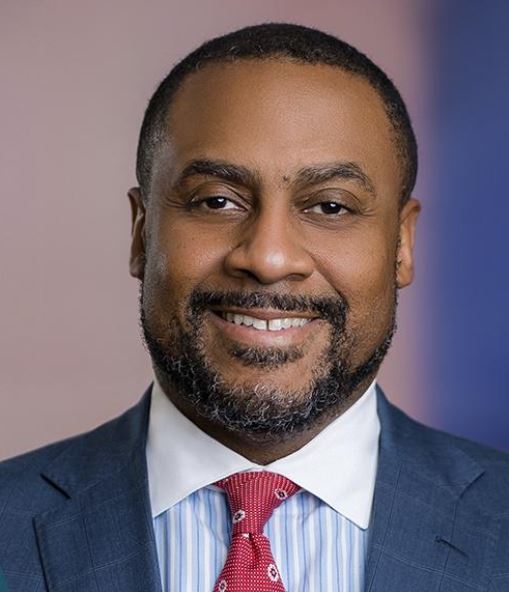Mintz, a Boston-based general practice law firm, sought to empower the firm's associates of color by launching a sponsorship program more than a decade ago
Mintz, Levin, Cohn, Ferris, Glovsky & Popeo, (Mintz) — a Boston-based general practice law firm that employs about 450 lawyers around the world — sought to empower its associates of color with a champion to advocate for them, launching its sponsorship program more than a decade ago.
Tyrone Thomas, a firm member and chair of the firm’s diversity committee, was a protégé in the program several years ago and is an example of the program’s success, becoming a member when he still was in the program. In fact, nine of the program’s participants — roughly 15% of all program candidates — earned promotion to member in part because of their participation.
The firm has created a unique approach to establishing sponsor-protégé relationships. For example, its methodical process for matching occurs over time and is based on the individual development goals of the protégés. “One of the things we want to do is to get to know sponsees as an individual and see what their aspirations are,” Thomas says, adding that the sponsorship relationship participants must be “committed to firm citizenship and invested in making that outreach.”
With senior associates, the priority of these matches turns to the partnership pipeline. At this stage, the sponsors are in deep communication with section managers, who oversee each practice area in terms of matter assignments and performance management, to make sure these senior associates are discussed in partner promotions and advancement talks.
Monitoring & assessing the relationships
Another key element in Mintz’s formal sponsorship program is monitoring the sponsor-protégé relationship, but it does not take a heavy-handed approach. Instead, members of the professional development team regularly oversee the sponsorship relationships to ensure the participants are continuously communicating. Indeed, the firm understands that one of the key factors in a successful relationship is a personal connection. Sometimes, unfortunately, the chemistry between the sponsor and protégé just is not there. In these cases, the firm emphasizes a no-fault split if the initial match does not work. “Sometimes you have to revise the parts to get the right compound that we’re looking for,” Thomas explains.

Analyzing the time horizon in sponsorship relationships is another critical factor that the firm keeps an eye on. As the protégés progress in their career, their career needs may evolve and this sometimes triggers a necessary change in the relationship. Once the relationships have cleared their initial stages, Mintz conducts a regular analysis of each relationship at 24 and 36 months.
Assignments & business development
In addition to periodically examining the effectiveness of the relationships, sponsors play a role in checking in on the assignments of their sponsees. Indeed, the breadth and depth of assignments and which clients these matters serve play a huge role in the advancement of associates. The professional development team at Mintz tracks protégés’ assignments and provides follow-up information at least bi-annually to help sponsors stay apprised of their individual protégé’s assignments. Having this information enables the sponsor to stay connected with the management of the protégé’s practice area and in communication with the relationship partners, who assigns the protégé most of the work.
To further help deepen the personal connection between the sponsor and sponsee, Mintz sends tips on a regular, periodic basis suggesting conversation topics, such ongoing trends in the legal industry or issues related to a practice. Whether the pair uses these tips or not, Thomas says they are just meant to keep the conversation going and spark engagement.
New business development collaboration is another critical element that arises in these relationships, and often these mutually beneficial opportunities are valuable learning experiences as well as chances for new business for the firm. For example, Thomas describes how he and his protégé collaborated on an article to address a client need, which allowed the protégé to demonstrate her knowledge in a developing area of the law. The client was thrilled with the article and shared it with his peers. “As an associate who is an African-American woman coming up the ranks, my sponsee was key in helping solidify a fairly new client relationship which resulted in me getting a new piece of work because of the work-product she produced,” Thomas states. “And she now shares in the origination credit for that.”
The pandemic reinforces the need for agility
Recent seismic occurrences that have rocked the legal industry, from the pandemic, the ensuing economic crisis, and the expanding racial justice movement, have all bolstered the need to remain nimble in 2020. The combination of isolation because of the pandemic and the emotional intensity of the growing movement for racial justice caused significant concerns for Thomas and the team at Mintz for the well-being of the firm’s associates of color.
To that end, Mintz empowered its program sponsors to play a key role in helping their protégés navigate this tumultuous time. In the end, Thomas knows the program is stronger because of the lesson on agility and flexibility. “If you are using some policy manual to manage a sponsor-sponsee program, it’s not going to work,” he says. “The key for any sponsor-sponsee program is pivoting.”







